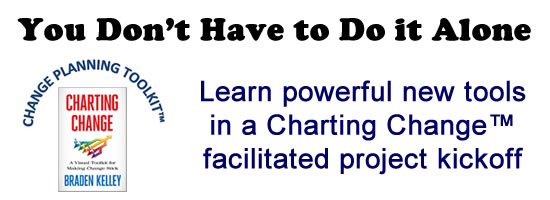3 Simple Steps to Silencing Your Inner Critic

Neuroscience explains it, but psychology offers the fix
During a recent creative strategy session, I witnessed what psychologist Carl Jung referred to over a century ago as “an inner critic or judge who immediately comments on everything.”
I had given a team of young executives a thought challenge as a right-brain warmup exercise. Although they were unsuccessful in landing on the elegant solution within the time allotted, one individual pulled me aside during the session break to tell me, rather sheepishly, that the solution had immediately popped into her head, but she hadn’t raised it with the group.
I was keen to know why she had remained silent.
“It just seemed easy and obvious,” she began, “but I’m not very good at these kinds of things, so I figured my idea was too simple, and couldn’t possibly be right. I almost said something, but the stress got me.”
She had rather tragically surrendered to her inner critic, and in so doing squelched her creative instincts to the detriment not only of herself, but also her team.
Nearly everyone has experienced this inner critic, and there is a good reason for it: scientists now know the neurochemical reaction that triggers it is integral to the adrenalin-fueled threat-protection system in our brain which not only governs our fight-flight-surrender response but also enables us to learn from our mistakes.
Think about the first time you experienced the emotional sensation of stress from being socially rejected or ridiculed: you quickly learn to fear and thus automatically avoid similar and potentially stressful situations of all kinds.
But while the threat-response allows us to learn from mistakes and keeps us feeling safe, secure, and certain, it can go too far. In fact, fMRI studies have shown that our threat-protection system is triggered even when there is no actual external threat, but just us being self-critical. Researchers at Kingsway Hospital in the UK concluded that if we are overly self-critical, we may attack ourselves, put others down, or seek some form of escape to, as they put it, “flee from the knowledge of our own faults.”
In the context of thinking and solving business problems, the challenge is that our perception of threat and response to stress becomes so ingrained and so reflexive, so mindless, that our avoidance tactics automatically prevent new experiences which may have some truly rewarding payoffs. When we’re self-critical, we self-censor, and don’t even give these experiences a chance.
But while neuroscience may have the explanation for our inner critic, and for what I experienced in my creative strategy session, it does not seem to have a fix. One does exist, however, and I’m fortunate to have learned it personally from spending time recently with Harvard psychologist Ellen Langer, who taught me a simple mindfulness trick which involves three quick and easy steps.
For an example let’s use the young executive participating in my creative strategy session, who is facing a tough problem, but is feeling the stress of speaking up and offering an original idea.
Step one is for her to first realize that she had already made an unwarranted assumption when the solution popped into her head: that something bad will happen if she shares it with the team. In this case, that bad thing is rejection.
Step two would be for her to then come up with a few reasons why her idea might not be rejected: her team may have misunderstood or misinterpreted the problem, her team was suffering from groupthink, the idea simply hadn’t dawned on anyone else yet, or they just plain loved her solution immediately.
From experience I can tell you that when you do this step, you will notice that whatever issue or situation you’re facing immediately becomes less stressful, because you’ve just gone from “I know what’s going to happen†to “maybe it will happen, maybe it won’t.†The fact of the matter is that you do not know what is going to happen, because you cannot predict the future with any certainty. No one can.
Step three would be for her to come up with a few reasons that, even if her solution is rejected, some good things will happen. Those reasons are very easy to find once you ask “what good things could result from rejection?”. For example, even if the team rejects the idea as offered, it may spark a new and better solution. Or she might gain credibility as a creative thinker.
When you take this third step, you notice immediately that you’ve now gone from thinking “there’s this terrible thing that’s going to happen†to thinking “there’s this thing that may or may not happen, but if it does, it could have both good and bad outcomes.â€
Finally, you will notice that you have not only injected a new and better perspective, but you have reduced your stress, deferred self-judgment, and thus and opened yourself up to a new and potentially rewarding experience. As Einstein once wrote, “Genius is not that you are smarter than everyone else. It is that you are ready to receive the inspiration.”
While we may never eliminate our inner critic — and we would never want to — we can certainly learn to silence it when it goes so far as to stifle our creativity.
Wait! Before you go…
Choose how you want the latest innovation content delivered to you:
- Daily — RSS Feed — Email — Twitter — Facebook — Linkedin Today
- Weekly — Email Newsletter — Free Magazine — Linkedin Group
 Matthew E. May is the author, most recently, of Winning the Brain Game: Fixing the 7 Fatal Flaws of Thinking.
Matthew E. May is the author, most recently, of Winning the Brain Game: Fixing the 7 Fatal Flaws of Thinking.
NEVER MISS ANOTHER NEWSLETTER!
LATEST BLOGS
Four ways you can ensure employees take accountability for their work
One of the most important driving factors for any successful business is a high-performing team. Having people working for you…
Read MoreWhat is digital upskilling and why is it important?
Photo by Annie Spratt on Unsplash In a world of business that never stands…
Read More


